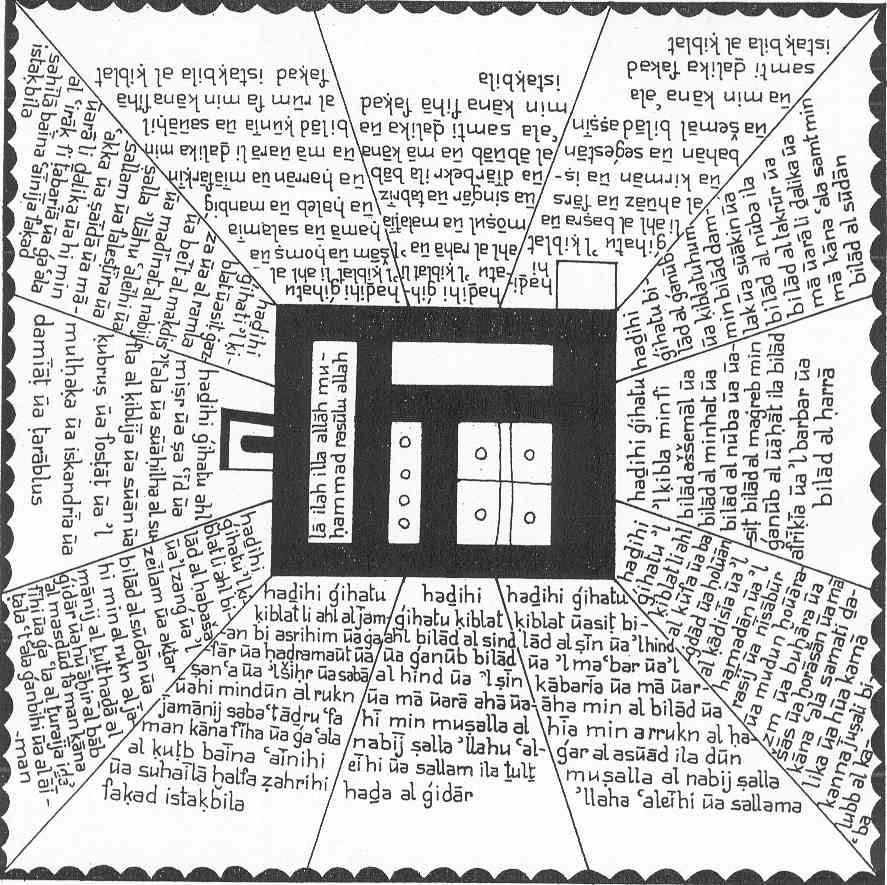To next page
(Pseudo) Ibn Al Wardi (about 1456) Kharidat al aji ib
(The Pearls of Wonders and the Uniqueness of Things Strange)
----------------------------------------------------
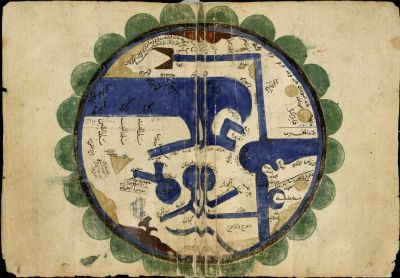
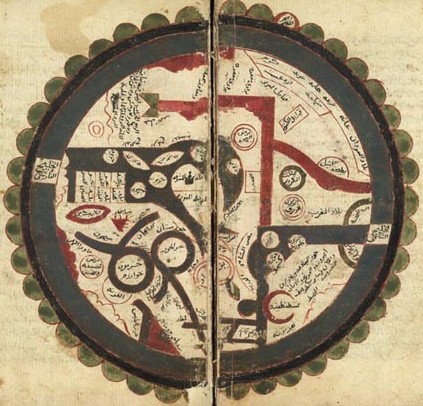
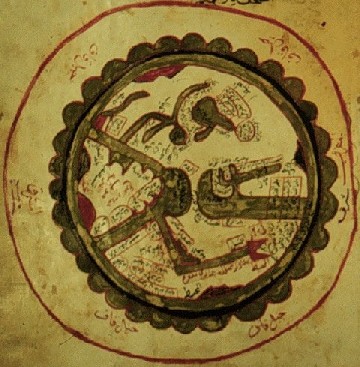
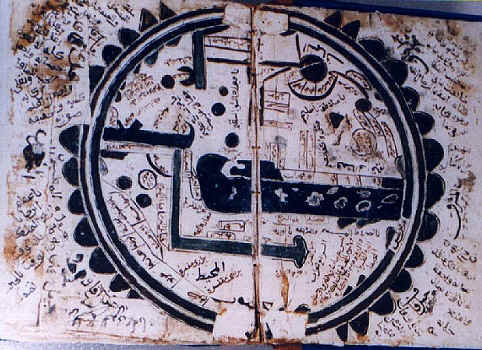
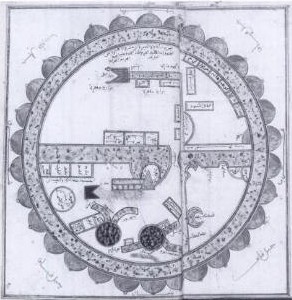
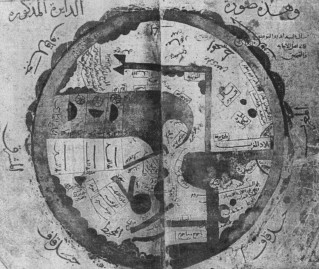
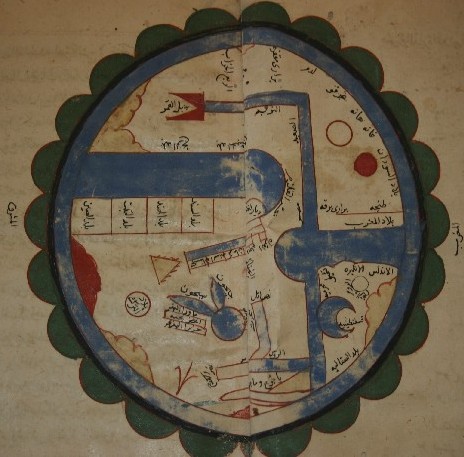
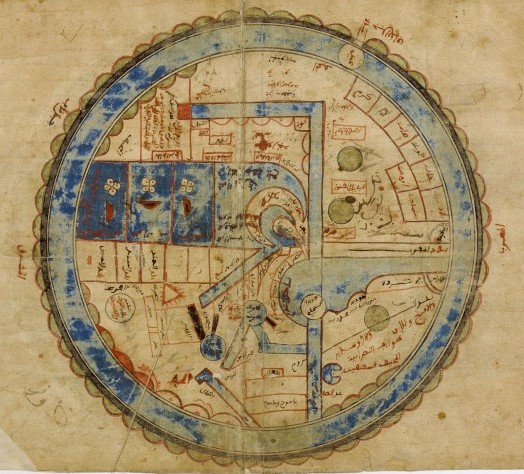
Taken from www.henry-davis.com/MAPS and the translation from Mappae Arabicae by Miller Konrad
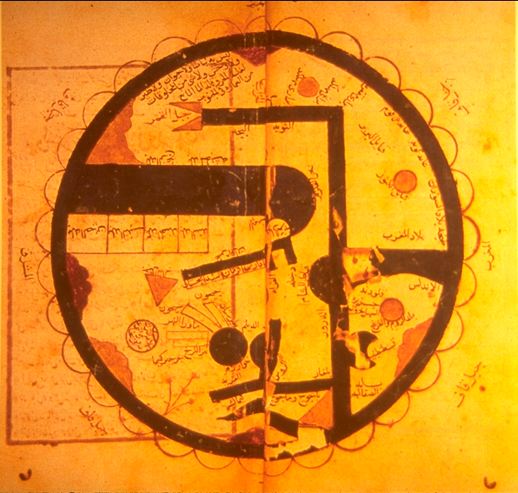
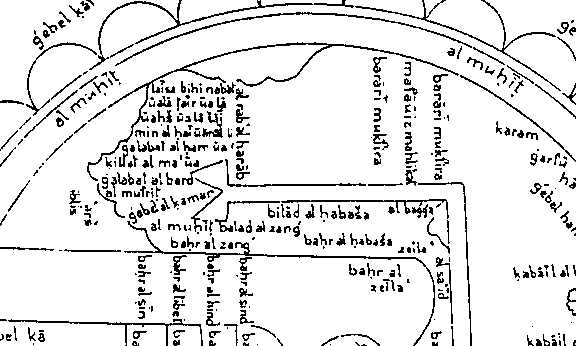
Taken from: De Guignes in ; Notices et extraits (1789)
Henry Salt A Voyage to Abyssinia: And Travels Into the Interior of that
Country ...
Also called : Ibn Al-ouardy/Wardy
Complete name: Zain al-Din Abu Hafs Omar bin Muzaffar Ibn Al Wardi.
He is a compiler. And a difficult one, as he doesn't mention the authors, nor does he update their work. As examples I would give that to him the capital of the Fatimid dynasty is al-Mahdiyya. This must be taken out of a work older then 968 when Cairo became the capital. Others are his stories taken from Masudi (without mentioning his name) in which the Zenj warriors ride on cattle. And his first chapter is almost entirely based on Yaqut's geography. And as a result those trying to date his work start from c. 900 to 1456. The later mentions 1789 or 1778... are the dates of the manuscripts found. One more date that is mentioned often 1349 in which Ibn Al Wardi died of plague. This was another Ibn Al Wardi, but the complete name is in both cases the same. In recent works from about 2000 on the Ibn al Wardi concerned is often called pseudo Ibn al Wardi.
Barbara; this land is situated on the sea shore; opposite Yemen, neighboring Nubie, it is densely populated, one can see there a mountain called Canouni, with seven peaks, stretching for 40 miles into the sea, on one of its peaks, there is a small town called Haouina. The people of Barbara eat frogs, and go to the sea to fish.
The land of the Zinji lies opposite to that of Sind; between the two intervenes the breadth of the Sea of Persia. The inhabitants are the blackest of the negro race. They worship idols, are brave, hardy and fight in battle riding oxen, as their country supplies neither horses, mules, nor camels. Massoudi says; I�ve seen their oxen kneel like camels, to be laden, and they travel fast with their burdens, Their inhabitations extend from the extremity of the gulph (Gardafui) to the low land of gold (Sofala �t il Dhab.) This country is extensive, and abounds in gold, grain, and the treasures of nature, and their towns are populous. Each town lying adjacent to a branch of a river. Snow is not know among them, nor rain, which is commonly the case with the greater part of the country of the blacks. They have no ships, but traders come in vessels from Uman, to buy their children, whom they sell in different countries. The Zinji are extremely numerous, through deficient in the means of carrying on war. It is said that their king goes forth to battle with three thousand followers, ridding on oxen. The Nile is divided above their country, at the mountain of Muksim. Most of the natives sharpen their teeth, and polish them to a point. They traffic in elephants teeth, panthers skins and silk. They have islands in the sea, from which they collect cowries to adorn their persons, and they use them in fraffic one with another, at an established rate. Adjoining to these lise the land of the Dum-a-dum. It is situated on the Nile, bordering on the Zinji. The inhabitants are infidels, and the tartars among the blacks, consisting of savage tribes of freebooters, who continually take captive and plunder every thing that falls in their way. In their country the river divides; one branch going towards Egypt, and the other to the country of the Zinji. Sofala �t il Dhab adjoins the eastern border of the Zinji. It is an extensive district, and mines of iron are found in it, which the people of the country work and sell to the traders from India, who give a high price for it, on account of it being harder and of better temper than that which they obtain in their own country, and they purify it and make it into steel, which admits to a durable edge. The natives themselves also make swords of it, and other offensive weapons. The most remarkable produce of this country is its quantity of native gold that is found, in pieces of two or three Meskalla weight; in spite of which, the natives generally adorn their persons with ornaments of brass. They are neighbors to the country of Ouacouac (Wak-Wak).
Yemen; this land is situated opposite the ones of Barbara and the Zindges, from which it is separated by the sea.. .. ..
Aden, nice town, where the ships of India and China come, one finds there all the products of the eastern countries, brought there from different places, silk, arms, kaimoukt (kind of leader) , musk, aoud (aloes wood), several aromatics, ivory, ebony, clothes of grass, estimated higher is value then those of silk, lead, pearls, precious stones, the zoubad (civet) and amber. In the north there is a mountain who goes from one sea to the other, leaving two wholes through which the boats can pass, this town (Aden) is 4 days away from the Zendges.
Hind, this big country extending north to south, is partly situated opposite the African coast, there where the Zindges live; it is the country of Mehradge, the title of the king.. ..
Concerning the lands in the southern hemisphere; they start with the lands of the Sudan or the Blacks, which extends up to the extremity of the Mogreb or Africa, towards the big sea, there are many deserts there where there is nobody.
Nubia, stretches from Egypt up to these deserts.
Badgia, this is a small country between Habascha, Nubia, and the deserts.
Habascha; is along the sea of Kolzoum; stretching till the land of the Zindges and the deserts.
The Zindges; their country is the biggest of the countries the Blacks live in, at one side it touches Abyssinie.
The island of Camar or the island of the Moon, very long and very large, one says 4 months walking east to west; there is a town called Han, where the king resides. That island produces nardgil or coconuts, sugarcane, one makes there clothes of grass, as beautiful as from silk, one builds boats of 60 elbows long, that carry 200 men.
The islands in the sea of Zinges, or of Zanguebar.
There you do not see anymore the pole star, or the big bear, and the waves are big as mountains.
1 The island Mohtaraka.
2 The island of Dhoudha
3 The island of Mamoura, this is an archipelago.
4 The island of Sakfar.
He calls the area south of the sources of the Nile: Rub'a al-Kharab, one of the richest regions in the world.
He describes Zanzibar as peopled by idolaters who boasted no code of writing (meaning no revealed religion) but were accustomed to being harangued (meaning they get speeches) by leaders of society in the marked places.
He declares that all Zendjs are pagan, bad and cruel. He makes them the darkest of the Negroes.
One finds at Sofala a big amount of gold, in very pure nuggets and each nugget (tibra) can be 2 to 3 mithcals.
There are cannibals on the isle of Saksar in the sea of the Zanj. (Saksar comes from Persian Sag-Sar: dogheads)
He places a mythical serpent in the sea of the Zanj.
The Wakwak of the land of the Zendjs is big fertile and prospers.
They do not know the cold or the rain .
